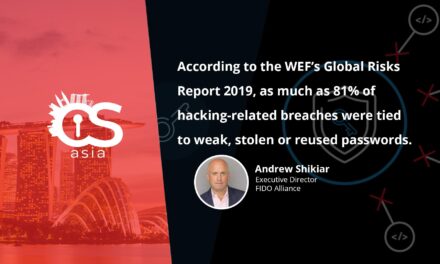How should banks and financial institutions in the region navigate the open banking landscape and build digital trust and confidence? How should banks and financial institutions in the region navigate the open banking landscape and build digital trust and confidence?
Globally and regionally across the Asia Pacific region, open banking is a driving force behind innovation in the financial services industry.
Implemented by many markets across the world as a platform to connect disparate financial back-end infrastructures across different organizations into one cohesive ecosystem, open banking benefits consumers by providing a better and seamless user experience.
However, the fundamentals upon which open banking are built have proved to be prone to security challenges such as identity theft and online fraud.
How should banks and financial institutions in the region navigate the open banking landscape and build customer trust and confidence in today’s digital-first world?
Security challenges facing open banking
According to Edwardcher Monreal,Security and Technology Evangelist, IAM Consumer Authentication Solutions, HID Global, banks and financial institutions could protect customers and users against online risks through the following concepts and principles:
- Preparation, automation, and scalability are critical. Financial institutions should always assume they are under attack, and should use technology proactively to be prepared.
- A key component of any financial services firm’s risk management strategy should be focused and optimized around preventing fraud, automating online threat detection, and being able to continuously validate the identity of the users.
- Technology should be scalable to support financial businesses in becoming more dynamic and agile to partition, isolate and adapt to any regulatory requirement and threats that consumers, banks, and fintech providers could encounter.
- Finding the balance between usability and security starts with identifying the key internal stakeholders that control operations that impact the customers. They can be part of the tech, the business, the security, or the legal team. One important aspect is that they all need to be aligned with the Chief eXperience Officer (CXO).
- When trying to establish the user experience, the consumer experience may not be attributed to a specific channel. For instance, when consumers are making online payments, or just simply trying to apply for a new telephone or mobile phone account, it would typically require multiple touchpoints with the consumer. These entry points that are part of the consumer experience can also add and introduce certain risks.
- Making sure consumers can transact securely across their end-to-end journey is critical: to significantly improve the ability to identify and analyze fraud, look at all the cross-channel data available and the correlate the consumers’ behavioral across multiple channels.
- Always remember that gaining trust is the end goal. The outcome is dependent on the stakeholders’ measurement of success within the constraints of their organization and formal jurisdictions.
Open banking has and will continue to be exposed to the cyber threat landscape. It has also provided organized crime syndicates and state sponsored threat actors with increased opportunities for identity theft and online fraud in the digital space.
If the above guidelines are implemented well, online threats will not be able to erode trust in the banking relationship. A whole-of-industry effort to build this precious trust can pave the way to smoother digitalization journeys, especially in developing markets in the region.

















